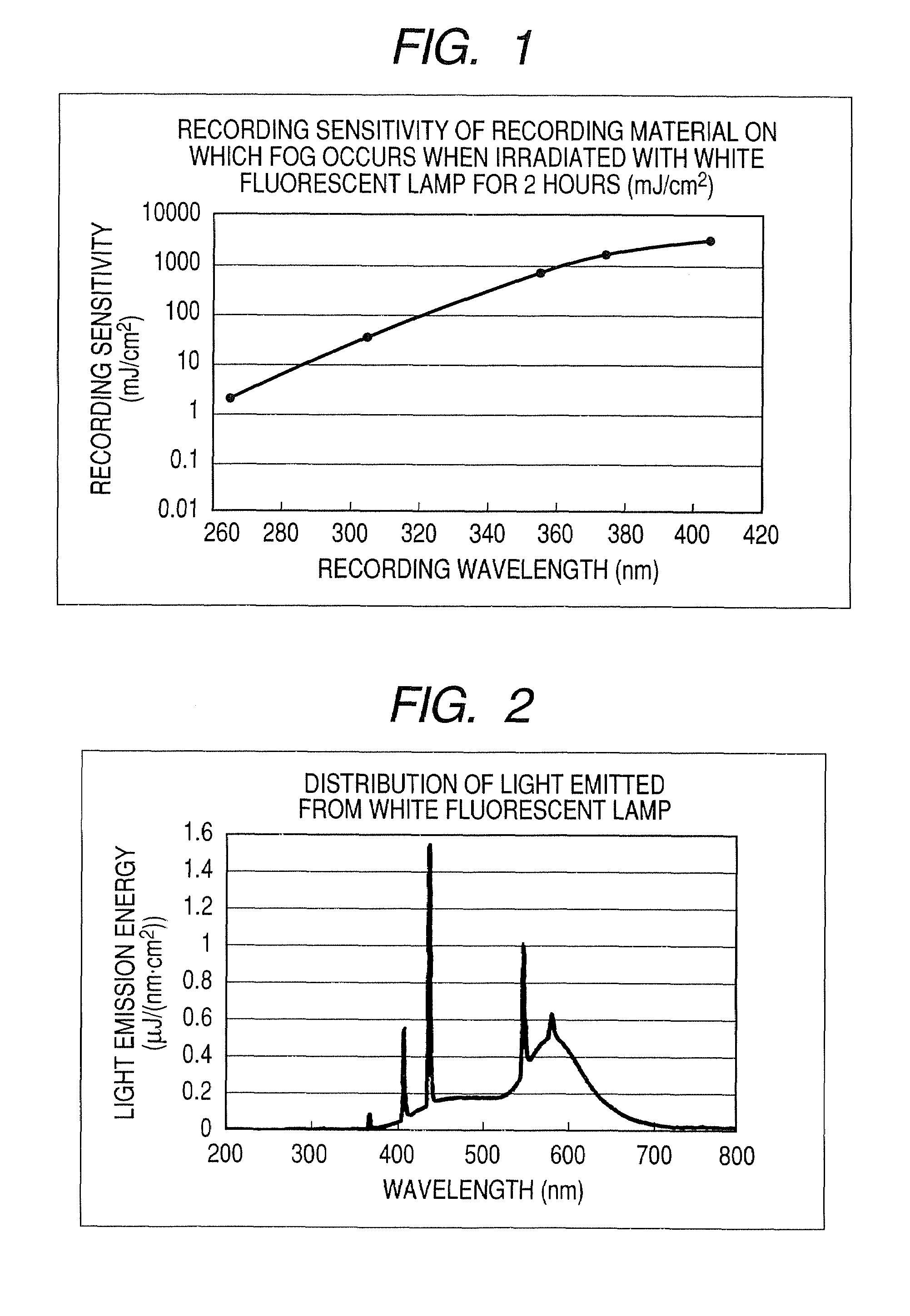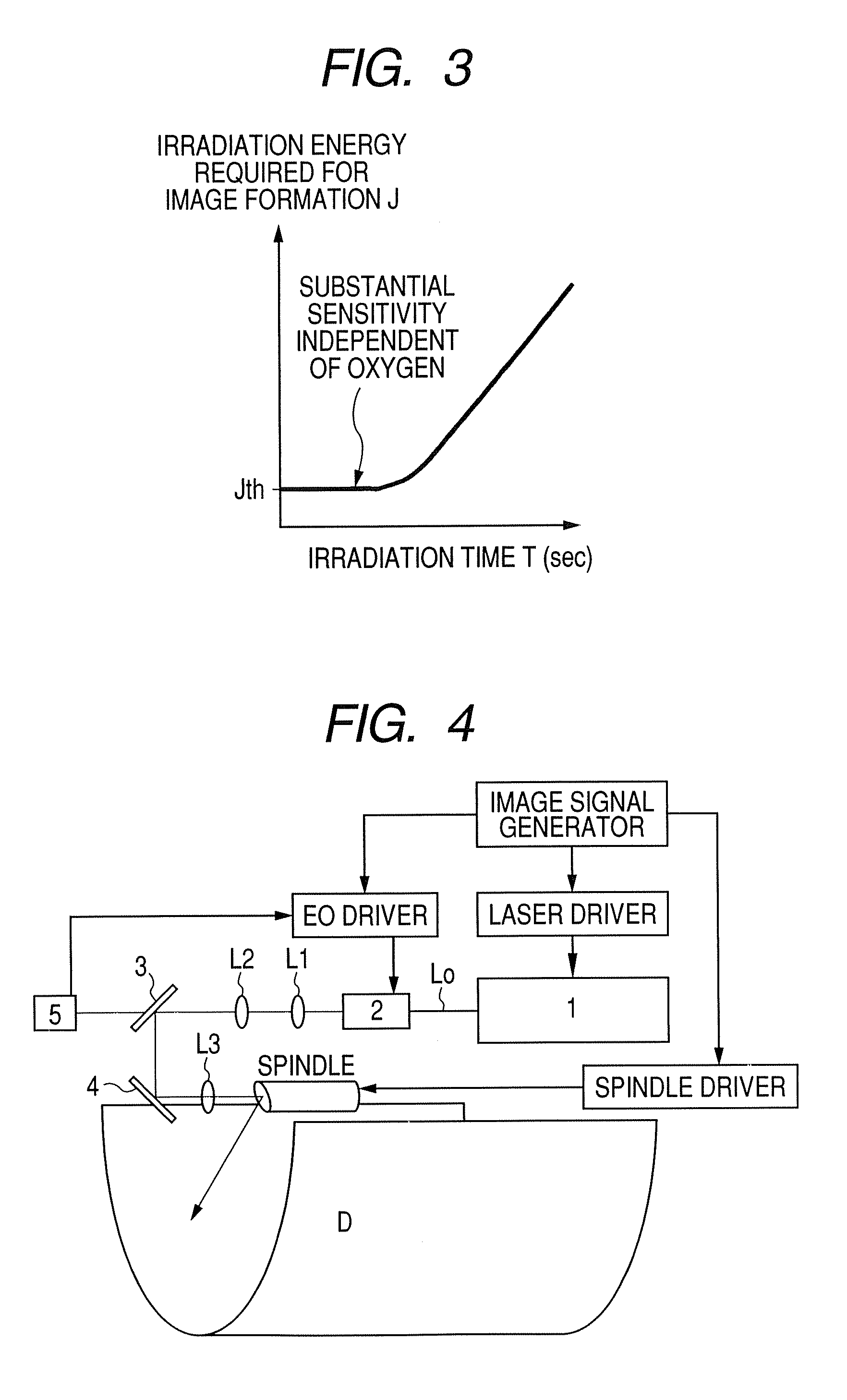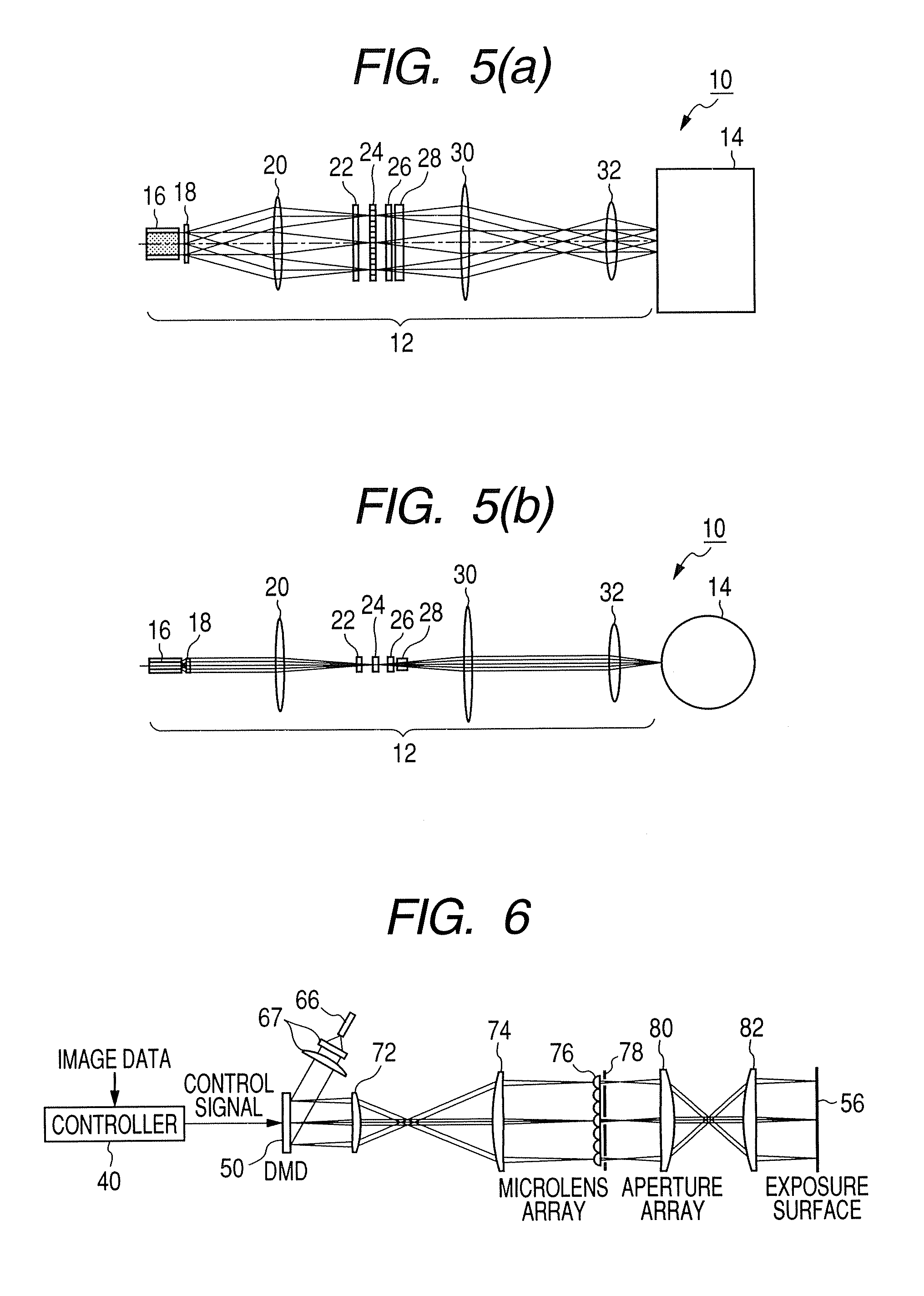Image forming method, planographic printing plate precursor, and planographic printing method
a technology of image forming and planographic printing, applied in the direction of instruments, diffusion transfer processes, photomechanical equipment, etc., can solve the problems of large fog, low work efficiency, and high work difficulty, and achieve satisfactory fine line reproducibility, high image quality, and high sensitivity and white light safety.
- Summary
- Abstract
- Description
- Claims
- Application Information
AI Technical Summary
Benefits of technology
Problems solved by technology
Method used
Image
Examples
examples
[0371]Hereinafter, the present invention will be described in detail by way of examples. The present invention is not limited to these examples.
[0372]1. Preparation of Support
[0373]A melt of a JIS A1050 aluminum alloy containing 99.5% by mass or more aluminum, 0.30% by mass Fe, 0.10% by mass Si, 0.02% by mass Ti, and 0.013% by mass Cu was subjected to a cleaning treatment, followed by casting. In this cleaning treatment, the melt was degassed to remove unnecessary gas, such as hydrogen or the like, and was filtered through a ceramic tube filter. Casting was conducted using a DC casting method. The coagulated ingot plate having a wall thickness of 500 mm was shaved from a surface thereof by a depth of 10 mm, and thereafter, the plate was subjected to a homogenization treatment at 550° C. for 10 hours so that an intermetallic compound was not formed into a rough and large mass. Then, the plate was hot-rolled at 400° C. and was then annealed at 500° C. for 60 seconds in a continuous an...
examples 1 to 9
[0407]The planographic printing plate precursors (1) to (9) fabricated as described above were used to carry out image formation and printing to evaluate sensitivity, fine line reproducibility, and white light safety. Hereinafter, an exposure method, a development method, a printing method, and an evaluation method used herein will be described. The planographic printing plate precursors used in the examples and the results of evaluation are shown in Table 1.
examples 10 and 11
[0408]Exposure and printing were performed in a manner similar to that of Examples 1 and 2, except that a one-pixel drawing time was changed as shown in Table 1. The result is shown in Table 1.
PUM
| Property | Measurement | Unit |
|---|---|---|
| wavelength range | aaaaa | aaaaa |
| wavelength | aaaaa | aaaaa |
| wavelength | aaaaa | aaaaa |
Abstract
Description
Claims
Application Information
 Login to View More
Login to View More - R&D
- Intellectual Property
- Life Sciences
- Materials
- Tech Scout
- Unparalleled Data Quality
- Higher Quality Content
- 60% Fewer Hallucinations
Browse by: Latest US Patents, China's latest patents, Technical Efficacy Thesaurus, Application Domain, Technology Topic, Popular Technical Reports.
© 2025 PatSnap. All rights reserved.Legal|Privacy policy|Modern Slavery Act Transparency Statement|Sitemap|About US| Contact US: help@patsnap.com



